<< Previous | Displaying results 5601-5625 of 6769 for "" | Next >>
View of the entrance to Oskar Schindler's enamel works in Zablocie, a suburb of Krakow. Poland, 1939-1944.
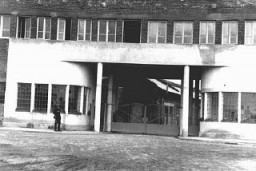
Scene from one of Oskar Schindler's parties in Krakow. At such events, Schindler (second from left) attempted to bribe Nazi officials for information about imminent deportations. Krakow, Poland, 1943.
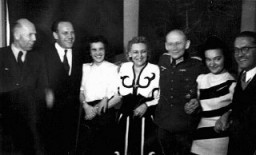
Oskar Schindler (left) at his enamel works in Zablocie, a suburb of Kraków. Poland, 1943-1944.
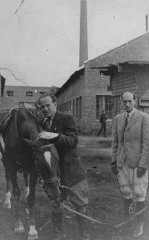
Amon Goeth, commandant of the Płaszów camp. Płaszów, Poland, between February 1943 and September 1944.
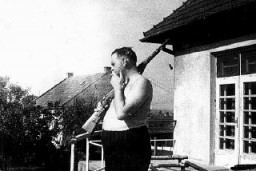
Camp commandant Amon Goeth delivers a speech to SS guards in the Płaszów camp. Płaszów, Poland, 1943-1944.

Construction of Oskar Schindler's armaments factory in Bruennlitz. Czechoslovakia, October 1944.

Construction of Oskar Schindler's armaments factory in Bruennlitz. Czechoslovakia, October 1944.
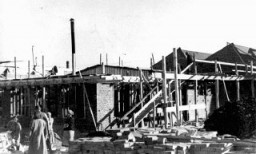
View during the construction of Oskar Schindler's armaments factory in Bruennlitz. This photograph shows the construction of a rail line to the factory. Czechoslovakia, October 1944.
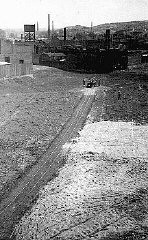
Construction of Oskar Schindler's armaments factory in Bruennlitz. Czechoslovakia, October 1944.
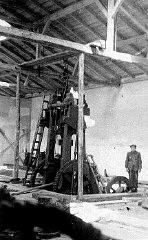
Oskar Schindler standing (second from right) with some of the people he rescued. Munich, Germany, May–June 1946.
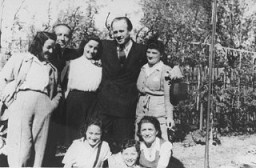
In Yad Vashem, the Israeli national institution of Holocaust commemoration, Oskar Schindler plants a tree in honor of his rescue efforts. Jerusalem, Israel, 1962.
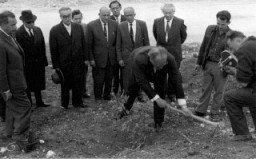
At Yad Vashem, the Israeli national institution of Holocaust commemoration, Oskar Schindler stands next to the tree planted in honor of his rescue efforts. Jerusalem, Israel, 1970.
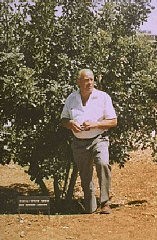
Ink and Blood by Arthur Szyk, 1944. Szyk portrayed himself at his desk, finishing off a still-struggling Adolf Hitler. Göring, Himmler, and Franco attempt to escape. In the wastebasket are the defeated figures of Mussolini, Laval, and Petain, whose regimes fell as a result of the Allied invasions. [Gift of Alexandra and Joseph Braciejowski]
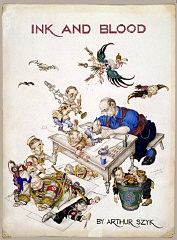
A Jewish family strolls along a street in prewar Kalisz. Poland, May 16, 1935.
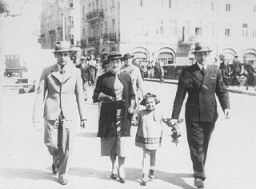
Prewar portrait of mother and son Zeni and Rudy Farbenblum. Munkacs, 1922.
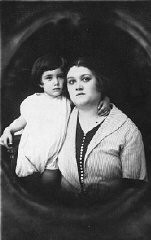
Portrait of the Ehrlich family seated around the family table. Munkacs, Czechoslovakia, 1930. Among those pictured is Elizabeth Ehrlich (later Roth) standing in the middle of the back row in a light dress, and Rella Ehrlich (front row, second from the right). Elizabeth was born in Munkacs. In 1944 she was confined to the ghetto there before being deported with her family to Auschwitz. She was later transferred to a camp in Bydogszcz, Poland, and from there to the Stutthof concentration camp.
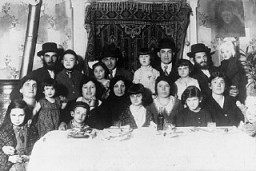
Jewish men sitting on the steps of a synagogue. Munkacs, Czechoslovakia, 1936.
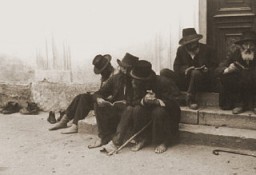
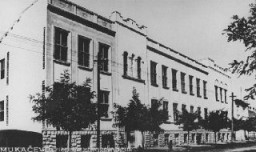
Group portrait of students and teachers at the Hebrew gymnasium in Munkacs. 1936-1937.
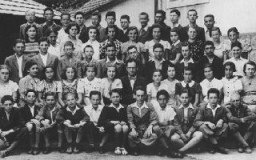
The Weinberger children pose for a photograph. Munkacs, 1940.
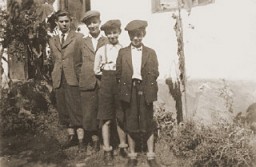
Group portrait of members of the Katz family of Munkacs. Pictured in the top row from left to right are: Chicha, Isabella, Philip, Jolon (Cipi), and Regina. In the bottom row are Helen (left) and Tereza. Munkacs, 1942–1943.
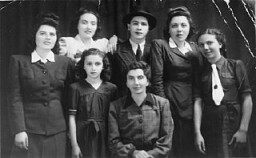
Books and writings deemed "un-German" are burned at the Opernplatz (Opera Square). Berlin, Germany, May 10, 1933.
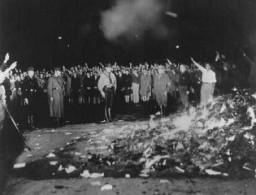
Students and members of the SA unload books deemed "un-German" during the book burning in Berlin. The banner reads: "German students march against the un-German spirit." Berlin, Germany, May 10, 1933.
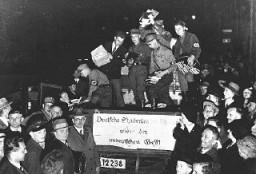
Students and members of the SA with armfuls of literature deemed "un-German" during the book burning in Berlin. Germany, May 10, 1933.
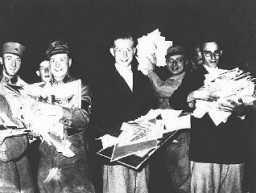
In Hamburg, members of the SA and students from the University of Hamburg burn books they regard as "un-German." Hamburg, Germany, May 15, 1933.
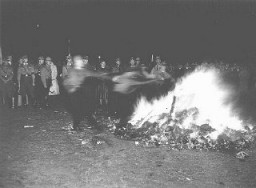
We would like to thank Crown Family Philanthropies, Abe and Ida Cooper Foundation, the Claims Conference, EVZ, and BMF for supporting the ongoing work to create content and resources for the Holocaust Encyclopedia. View the list of donor acknowledgement.